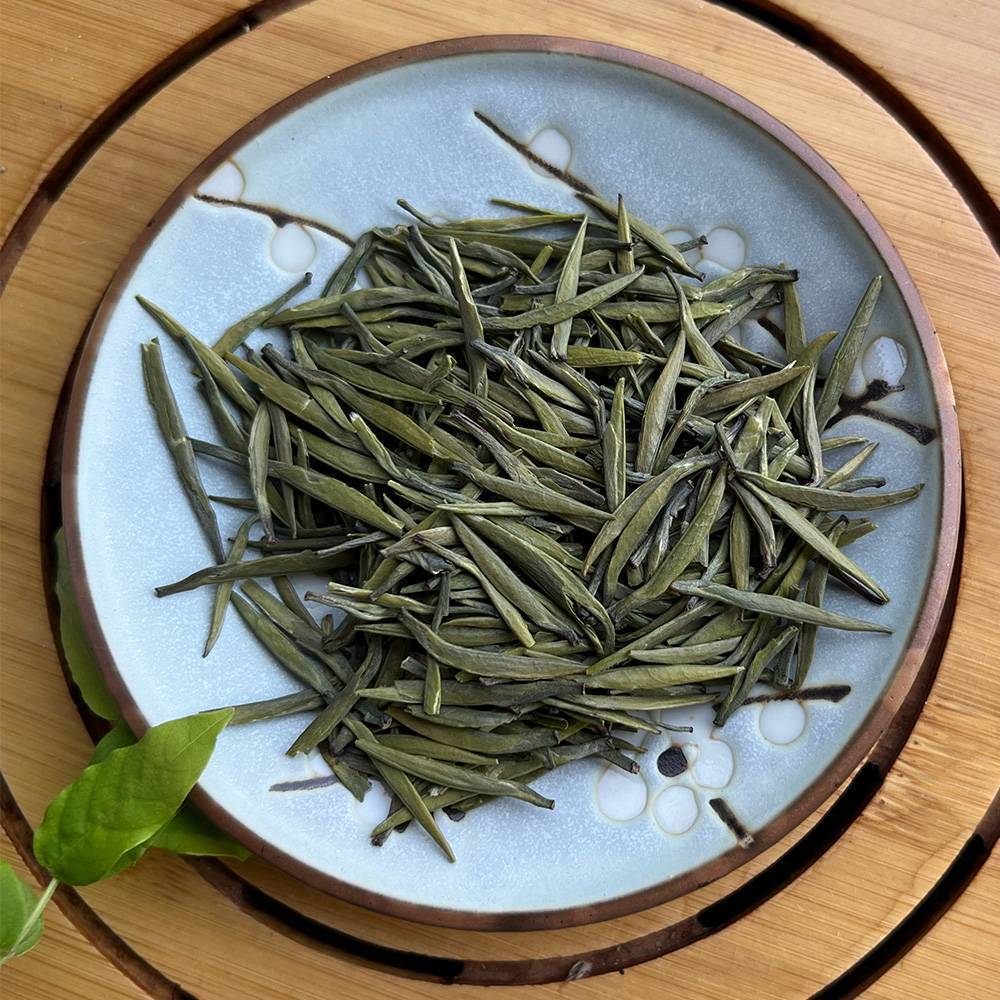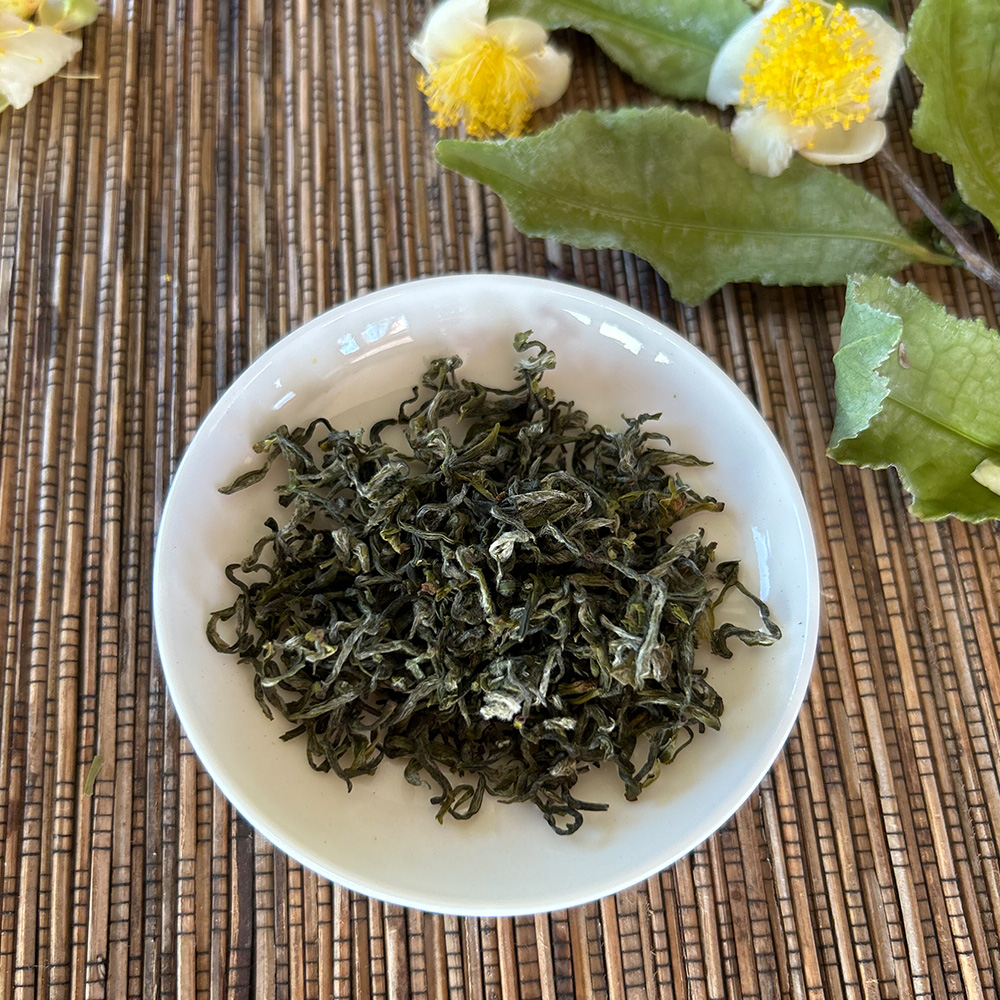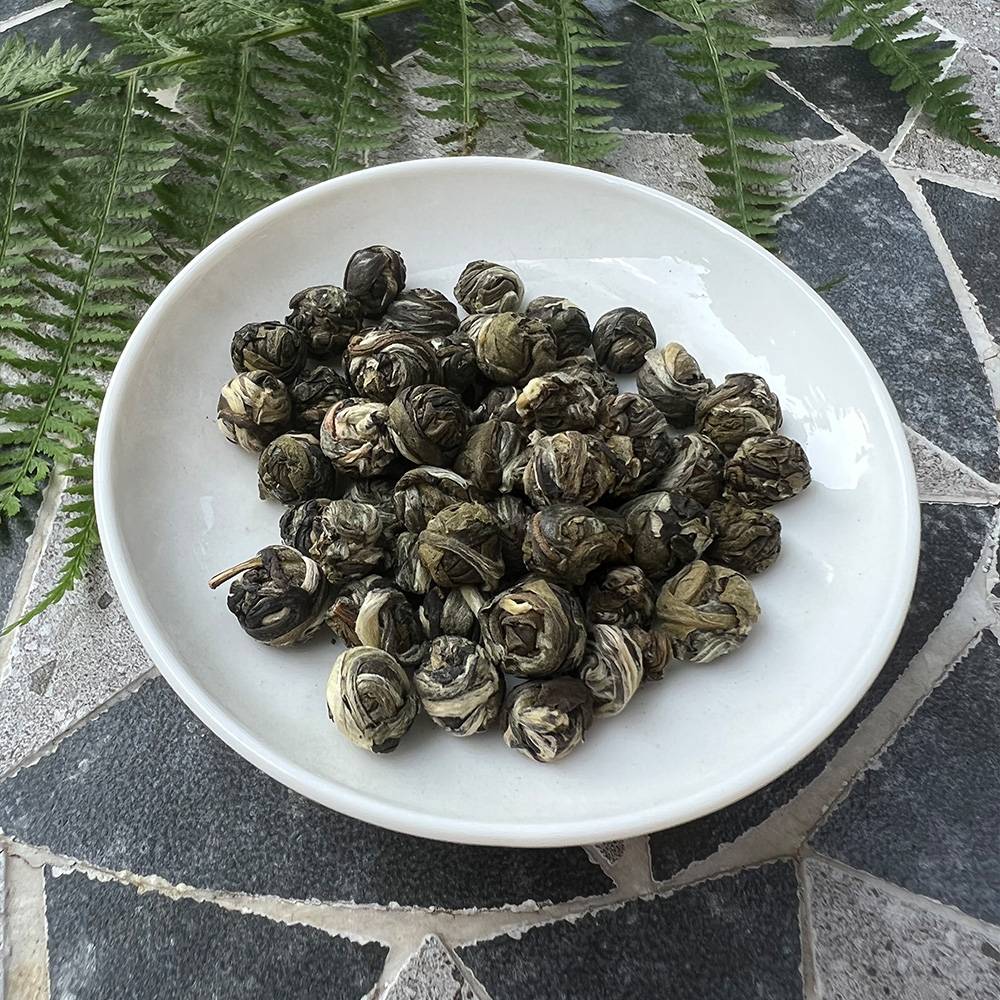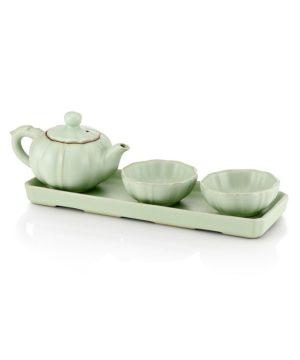-
×
 Ru blue porcelain set 3 pcs
1 × 31.90€
Ru blue porcelain set 3 pcs
1 × 31.90€ -
×
 Ru green porcelain set with tray 4 pcs.
1 × 33.10€
Ru green porcelain set with tray 4 pcs.
1 × 33.10€
Matcha, tea and its surroundings, Tea Benefits
Chinese green teas and Japanese green teas: similarities and differences
When it comes to leaf tea, almost everyone has an idea of what green tea is: of all the colors of tea, it is along with black the most famous and popular type even in the West. However, not everyone knows how many green teas there can be and how different they can be from each other. Historically, green tea was the first tea to be produced: China, the cradle of this tradition, boasts a large number of them, with leaves of different shapes and flavors each different from the other. Another country producing excellent green teas, specializing in the production of this category, is Japan, where there are at least twenty.
Oh yes, because green teas are not all the same: different cultivars, terroirs and processing methods result in products with very distinct organoleptic characteristics. In this article we will learn about the most important Chinese and Japanese green teas, seeing how the factors mentioned just above bring out such different flavors.
How to make green tea
Let’s start with the basics first: what are the basic steps of processing a green tea? Here they are in points, telling you about them one at a time:
- Collection
- Withering
- Blocking oxidation
- Working the leaves to shape them
- Drying
As with all teas, we start with the harvesting of the leaves and any buds. Already here we notice a substantial difference between China and Japan: in the former, in fact, harvesting is mostly done by hand, while in Japan harvesting is almost solely mechanized. The reason why the sunny expanses of tea in Kyushu appear so neat and precise is precisely this: harvesting is done by machines that literally run over the plants, precisely reaping only the chosen leaves. If the rows were not so precisely regulated, the machines would end up cutting the wrong part, damaging the plant and jeopardizing the next harvest.
As soon as they are harvested, the tea leaves are left to wither for a fairly short time, usually not reaching 3 hours. The withering can take place outdoors naturally or indoors, with controlled temperature and humidity. At this stage, the leaves lose a certain percentage of moisture and acquire a different texture that will make them more easily malleable for processing.
Why is it that green tea withering has such a short duration? Because it is intended to avoid oxidation, a process that begins naturally once the leaves are detached from the mother plant following harvest. In fact, green tea is theonly type of tea that is not oxidized, meaning that the enzymes responsible for this reaction must be deactivated immediately, to prevent the start of this process that would tint the leaves brown (like those of a black or dark oolong tea) and completely change the taste.
Blocking oxidation is achieved by subjecting the leaves to very intense heat, and this can be done in two ways:
- with the panning, which is the application of dry heat
- with the steaming, which is the application of heat by steam
Here China and Japan differ sharply: but let’s look at the two processes specifically.
Panning: the Chinese method
The word panning (from English pan, meaning frying pan) means a cooking of leaves by dry heat application: in China, it is the most commonly used method. When this operation is done by hand, the leaves are crushed on the edges and bottom of the wok and continuously sautéed, with very high temperatures and quick, complicated hand movements that are the result of years of experience. The same process is also often performed using special machines called panning machines, similar to large rotating drums that reach very high temperatures and through which the tea leaves are passed.
With this kind of roasting, called in Chinese sha qing, literally “killing the green,” the aim is also to remove from the leaves the herbaceous, vegetable flavor that is not considered elegant and refined to Chinese taste.
Steaming: the Japanese method
Instead, the word steaming (from English steam) indicates a cooking of the leaves by applying steam. Japanese teas usually follow this type of processing, which leaves the leaves very green but tends to weaken them in structure-this is why Japanese teas often appear very green but more “crumbly,” and the liquor in the cup is dull.
There are three different styles in steaming (mushi) that vary in duration, from a few seconds to entire minutes:
- Asamushi: light cooking
- Chumushi: medium cooking
- Fukamushi: prolonged cooking
As we said, steaming weakens the leaf, and this leads teas processed by more intense cooking(fukamushi) to develop a greener liquor and stronger in flavor, as the leaves are more crushed and thus infuse much faster in the water.
What hints do these two different types of procedures give to the tea?
The panning brings out mainly roasted hints in Chinese teas, reminiscent of dried fruits such as almonds, walnuts, and hazelnuts, and sweet notes such as those of boiled chestnut. Disappearing is the more strictly vegetal note and there are delicate nuances that also recall floral scents in some cases.
Lo steaming instead brings out more vegetal, intense and marine scents: we find in particular the umami, that pleasant savoriness that is reminiscent of bouillon cube and is the characteristic and most sought-after note in the best Japanese green teas.
The oxidation blockade is followed in green tea processing by the stage where the leaves are given the desired shape: again, China and Japan differ.
The range of shapes given to the leaves of Chinese green teas is infinitely varied: we have teas whose leaves are rolled and curled like snails (Bi Luo Chun), teas with flattened leaves (Long Jing e Tai Ping Hou Kui), tea with thin, needle-like leaves (Anji Bai Cha) and even teas with curved leaves and flattened ends called “sparrow’s tongue” (Que She)

Japanese green teas, on the other hand, have less variety in form: we can mainly recognize two types of form, namely the flattened form for wide, thick leaves (as in the case of teas bancha), and the needle-shaped one, where the thinner and finer processed the leaf, the more valuable the tea (think of the sencha and the precious gyokuro).
With drying, the last step in the process, the leaves lose their residual moisture and fix the flavors acquired so far, and are then ready for packaging and consumption. This last step is usually carried out through temperature- and humidity-controlled ovens, or-more rarely-in the sun, with the leaves arranged on large bamboo trays.
Now that we have seen how green teas are generally made, let’s look together at which are the most famous Chinese green teas and Japanese green teas, with their characteristic aromas and flavors.
The 8 most famous Chinese green teas
Long Jing: “dragon well.”
This green tea, historically the favorite of Emperor Qianlong (1711-1799 AD) who elevated it to the status of imperial tea, owes its name to its village of origin in Zhejiang province. It has flattened leaves and sweet notes reminiscent of nuts and boiled chestnut. Particularly prized is that harvested before the Qing Ming festival (early April) in the Xihu area.
Anji Bai Cha: “Anji white tea.”
A name that sounds like a trick, doesn’t it? It is a green tea, but from albino cultivar-hence the name “bai,” meaning “white.” Anji is the area where this tea grows, in Zhejiang province. Its leaves are between light green and yellowish green, long, thin and crisp, almost needle-like. The flavor is mild, with floral notes and a very clear liquor in the cup, semi-transparent. It is a tea very rich in L-theanine, an amino acid that gives a sweet, umami flavor.

Tai Ping Hou Kui: “Tai Ping Monkey King.”
The village of Tai Ping in Anhui province produces this distinctive and prized tea, which is often processed by hand: to give the very long leaves (they sometimes reach 15 cm!) their typical flattened shape, they are flattened and pressed between two wire meshes that leave their texture visible on the surface, and then quickly passed over the flame. The aromas and flavors are refined and delicate, with hints of flowers and a long-lasting freshness.
Bi Luo Chun: “green spring snail.”
A name that anticipates the form: indeed, this typical Jiangsu green tea has leaves worked like snails, delicately rolled on themselves. A bud and the first leaf, tender and often covered with white down(bai hao), are used to produce this tea. The range of flavors and aromas invokes a sweet, almost buttery, delicate herbal hint with floral notes at the close.

Mao Feng: “hair tip.”
Again, the name refers to the shape of the leaves, which are very thin and rolled to resemble hair. It is a tea produced in Anhui, specifically in Mt. Huangshan, and a sad legend is attached to its origin. The story goes that a young tea-gatherer fell in love with a man from her village, but the local tyrant, jealous, wanted her only for himself. So he kidnapped her and killed her beloved. When the maiden learned of her lover’s death and found his corpse on Huangshan Mountain, she wept so hard that her tears, wetting him, turned the man’s body into a tea tree. It is a flavorful tea with fruity and roasted notes, an enveloping and smooth body, and a pale gold-colored liquor.
Enshi Yulu: “jade dew of Enshi.”
This Chinese green tea from Enshi county in Hubei province is the exception to the rule in terms of its processing. We saw in the previous paragraph how Chinese green teas are characterized by cooking in wok or panning machines that apply dry heat: well, Enshi Yulu tea is processed by steam just like Japanese teas. It is the only Chinese tea with this peculiarity, which is reflected in the taste: more pronounced vegetal notes, with herbaceous hints of arugula and a pleasant sweet-savory taste, closing with a chestnut note. Its small, dark green, needle-like leaves are also reminiscent to the eye of a Japonese sencha.
Lu An Gua Pian: “melon seeds of Lu An.”
A green tea originating in the village of Lu An, Anhui, which owes its name to the shape given to its leaves during processing: oval and flattened, they are in fact somewhat reminiscent of melon seeds. It is a tea characterized by incredibly floral notes and hints of roasted and praline nuts. It is one of China’s finest green teas, with a silky smooth body that is truly elegant.
Jasmine Pearls: “jasmine pearls”
We could not fail to mention the quintessential fragrant green tea produced mainly in Fuding, Fujian, and carrying the heady notes of the Chinese flower that symbolizes love. The reason for the name is the special rolled shape given to the leaves, which resemble small pearls. The green tea is scented by contact with jasmine buds until the aroma is absorbed-a process that can be repeated up to 7 times, replacing the spent flowers with fresh ones each time.

Japan’s 8 most famous green teas
Sencha: literally, “infused tea.”
Sencha is the first crop, the freshest and most aromatic. It has bright dark green, needle-shaped leaves with a glossy surface. The taste is marine, vegetal, sweet and umami, that typical savoriness of Japanese green teas similar in flavor to bouillon cube. There are many cultivars in Japan that produce sencha with very different notes, from the more herbaceous and fragrant sencha to the sweeter and buttery ones to cultivars with more floral and delicate notes.
Bancha: “common tea.”
A word with a fairly general meaning indicating the crops following the first one (the one from which sencha is made). It is a simple tea, but one that can taste great and accompany meals excellently. Its leaves are thicker than those of sencha and appear folded in on themselves and flattened. Again, a tea with vegetal flavors, smooth with herbaceous and fresh hints.
Gyokuro: “jade dew.”
This is Japan’s most prized tea, as you would guess from its name and the beauty of its leaves: needle-like and very thin, often hand-processed, with a hue between forest green and blue and a shiny surface. In the cup, gyokuro gives off strongly sweet and umami notes, with a body that is a velvet on the palate: it is in fact a tea shaded for at least 21 days before harvesting, a process that – by depriving the leaves of light – causes the tea to develop a lot of chlorophyll and amino acids that make it very green, very sweet and flavorful.
Hojicha: “roasted tea.”
A green tea with leaves that are already very aromatic when dry: their color has shades of brown, brown and coppery brown, a symptom of the fact that the processing had an extra step compared to other Japanese green teas: roasting. The liquor is between orange and brown, with an incredibly enveloping and sweet taste, marked by notes of hazelnut and latte. Roasting also evaporates almost all the caffeine, making it perfect even for those sensitive to this substance.
Genmaicha: “tea with brown rice.”
A mouth-watering tea made from roasted and puffed brown rice and bancha leaves (or sencha of not the highest quality). It originated as a poor tea after World War II, when the cost of green tea leaves was high and raw material was scarce: merchants began blending tea with rice to continue selling it despite the severe food and economic crisis. Today, genmaicha is one of Japan’s most beloved teas, with a sweet, roasted taste that recalls the starch of rice and pampers the stomach at any time of day.
Kamairicha: “tea roasted in a pan”(kama is the iron pan).
Here it is, theJapanese exception to classic steaming: kamairicha is in fact green tea sautéed in a pan to stop its oxidation as one would for a Chinese green tea. Even its leaves have an atypical processing for a Japanese tea: instead of being rolled on their own axis producing the classic needle shape, kamairicha leaves are twisted and curled. The notes of this tea are fresh and herbal with roasted and nutty undertones that might remind one of a Mao Feng or a Long Jing.
Kukicha: “twig tea.”
A tea low in caffeine since it consists only of green twigs of camellia sinensis: in fact, it is only the leaves, as a defense against insect bites, that are rich in caffeine. A gentle, umami green tea that is not at all astringent or bitter and can be drunk at any time of day.
Matcha: For us Westerners, it remains perhaps the most famous of all Japanese teas.
It is a green tea powder made by grinding high-quality camellia leaves, such as gyokuro and other shaded teas. Unlike all other teas, it is prepared by vigorously whipping it in water at a not-too-high temperature (60°C-70°C) and creating a beautiful foam on the surface, called jade foam. It is rich in antioxidants and caffeine, great for an instant energy boost! If you opt for a culinary and nonceremonial grade, you can also use it as a natural coloring agent for beverages and foods.
If you would like to delve further into the vast world of Japanese teas and learn about other peculiarities related to this country’s productions, we have written an article entirely dedicated to them that is just right for you.
The importance of terroir
We have seen how vast the world of green teas is, especially that of two production giants such as China and Japan. In addition to the selection of particular cultivars and processing methods, terroir-exactly as with wine-plays a key role in characterizing aromas and flavors.
With the term terroir includes a multitude of factors: altitude and latitude, climate, annual rainfall, chemical and biological composition of the soil, flora and fauna living in that area, even the proximity of human activities. A green tea that grows on a cool, misty Chinese hillside in Anhui will not have the same organoleptic characteristics as a Japanese green tea that grows on volcanic soil, on a hot Kyushu plain, and near the sea.
Everything contributes to forming the “character” of the plant and giving it those unique and unrepeatable nuances of taste. The territoriality that can be perceived in the taste of a tea tells its story and goes beyond the processing method and genetics themselves.
Green teas: exploring a universe within the universe
If you have not been discouraged after reaching the end of this article, but as bold taste explorers you are more curious than before, it is time for you to sample all the nuances of aromas and flavors seen so far!
Whether you are fascinated more by the Chinese green teas or more by Japanese green teas, our online shop will be able to satisfy your curiosity with lots of carefully selected products from both countries.All you have to do is pay us a visit and choose which leaves you would like to discover first!


 Italiano
Italiano Français
Français Deutsch
Deutsch
 Ru blue porcelain set 3 pcs
Ru blue porcelain set 3 pcs  Ru green porcelain set with tray 4 pcs.
Ru green porcelain set with tray 4 pcs. 